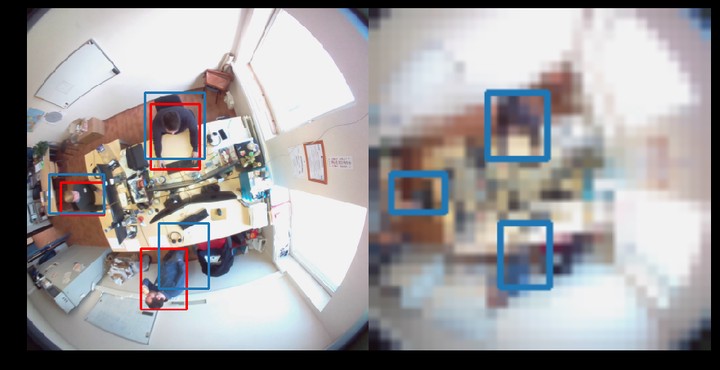Anyone here? Smart embedded low-resolution omnidirectional video sensor to measure room occupancy
 Example showing detections on a 32px omnidirectional image up-scaled using an interlaced kernel
Example showing detections on a 32px omnidirectional image up-scaled using an interlaced kernel
Abstract
In this paper, we present a room occupancy sensing solution with unique properties: (i) It is based on an omnidirectional vision camera, capturing rich scene info over a wide angle, enabling to count the number of people in a room and even their position. (ii) Although it uses a camera-input, no privacy issues arise because its extremely low image resolution, rendering people unrecognisable. (iii) The neural network inference is running entirely on a low-cost processing platform embedded in the sensor, reducing the privacy risk even further. (iv) No manual data annotation is needed, because of the self-training scheme we propose. Such a smart room occupancy rate sensor can be used in e.g. meeting rooms and flex-desks. Indeed, by encouraging flex-desking, the required office space can be reduced significantly. In some cases, however, a flex-desk that has been reserved remains unoccupied without an update in the reservation system. A similar problem occurs with meeting rooms, which are often under-occupied. By optimising the occupancy rate a huge reduction in costs can be achieved. Therefore, in this paper, we develop such system which determines the number of people present in office flex-desks and meeting rooms. Using an omnidirectional camera mounted in the ceiling, combined with a person detector, the company can intelligently update the reservation system based on the measured occupancy. Next to the optimisation and embedded implementation of such a self-training omnidirectional people detection algorithm, in this work we propose a novel approach that combines spatial and temporal image data, improving performance of our system on extreme low-resolution images.